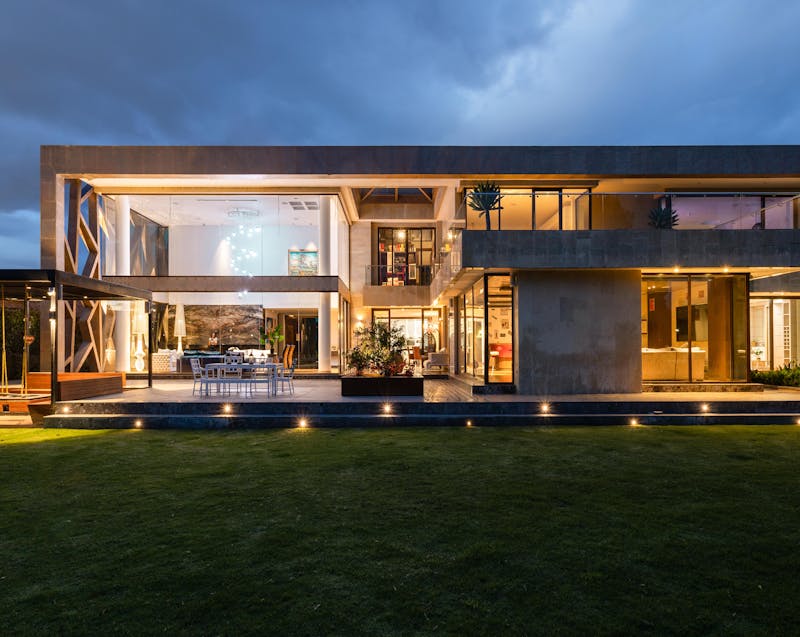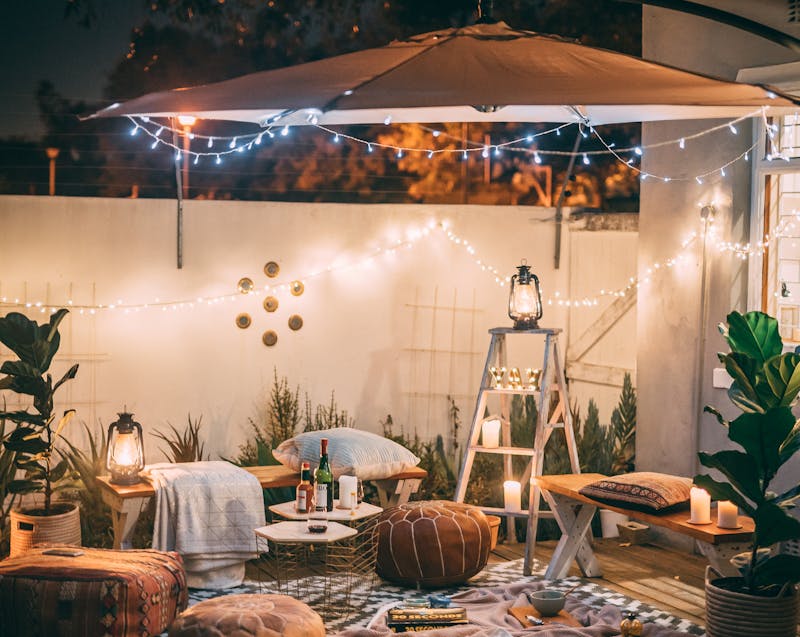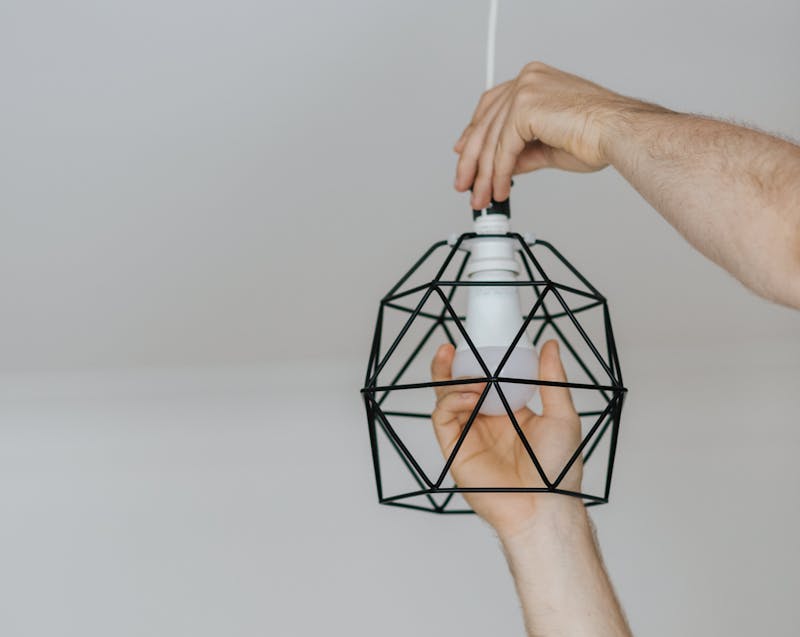
- Energy-efficient outdoor lighting, such as LED, solar, and low-voltage systems, reduces electricity costs and requires less maintenance.
- Professional installers design systems that balance safety, aesthetics, and efficiency, avoiding common mistakes like over-lighting or poor placement.
- Smart controls—including timers, dimmers, and motion sensors—maximize efficiency by ensuring lights are only used when needed.
- Choosing the right installer means checking for licenses, experience with energy-efficient systems, and transparent pricing.
- Although professional installation may cost more upfront, the long-term savings, improved safety, and increased property value make it a worthwhile investment.
- Future trends, like AI-driven lighting and better solar storage, will further improve efficiency and convenience for homeowners.
Outdoor lighting plays a bigger role in home improvement than many homeowners realize. It’s not just about illuminating pathways or highlighting landscaping features. The right system can increase safety, boost curb appeal, reduce energy bills, and contribute to a more sustainable lifestyle. That’s why understanding which outdoor lighting installers focus on energy-efficient systems for a home improvement project is crucial.
Professional installers bring years of expertise to the table, helping homeowners select the best solutions that combine design, functionality, and efficiency. With their guidance, families can enjoy beautiful and well-lit outdoor spaces without the burden of high electricity costs. This article dives into why energy-efficient outdoor lighting is important, the insights installers share, and how to choose the right expert for your needs.
What Makes Outdoor Lighting Energy-Efficient?
When evaluating which outdoor lighting installers focus on energy-efficient systems for a home improvement, it helps to understand what defines energy efficiency in the first place.
Energy-efficient outdoor lighting systems minimize power consumption while maximizing illumination. Installers often recommend:
- LED fixtures – Use up to 80% less energy than incandescent bulbs and last 20–25 times longer.
- Solar-powered lights – Harvest sunlight during the day and provide cost-free illumination at night.
- Low-voltage systems – Operate at 12 volts, reducing both energy use and safety risks.
- Smart controls – Timers, dimmers, and motion sensors prevent unnecessary energy waste.
Many homeowners mistakenly equate brightness with efficiency, but professional installers emphasize that the right combination of lumens (light output) and wattage (power consumed) matters most. By matching fixture design with intended use, efficiency is achieved without compromising visibility.
The Benefits of Energy-Efficient Outdoor Lighting
Choosing installers who specialize in energy efficiency means reaping long-term rewards. Professionals highlight the following benefits:
Cost Savings
- Lower electricity bills due to reduced wattage usage.
- Fewer replacements since LEDs and solar lights last longer.
- Reduced maintenance costs because high-quality fixtures withstand the weather better.
Environmental Impact
- Decreased carbon footprint by consuming less energy.
- Minimized light pollution through directional fixtures and shields.
- Reduced waste since efficient systems need fewer replacements.
Safety and Security
- Bright, strategically placed lights discourage trespassers.
- Well-lit pathways and driveways reduce tripping hazards.
- Consistent illumination ensures family and guest safety.
Property Value and Aesthetic Appeal
- Homes with well-designed lighting often see an increase in curb appeal.
- Energy efficiency paired with an attractive design can boost resale value.
- Landscapes and architectural features look more striking under quality fixtures.
Installers often point out that many homeowners underestimate how much poorly designed lighting systems cost them—not only in electricity but also in missed opportunities to improve home value.
Common Mistakes Homeowners Make with Outdoor Lighting
Professional installers are quick to identify recurring errors homeowners make when attempting DIY projects or hiring inexperienced contractors. These mistakes reduce efficiency and overall performance:
- Over-lighting spaces – Using too many fixtures or overly bright bulbs creates glare and wastes energy.
- Poor placement – Fixtures aimed incorrectly leave dark spots while spilling unnecessary light onto neighbors’ property.
- Ignoring smart controls – Without timers or motion sensors, lights often stay on when not needed.
- Cheap materials – Low-quality fixtures deteriorate quickly, causing inefficiency and frequent replacements.
- Improper wiring – Safety hazards and wasted energy often result from DIY wiring errors.
By working with professionals who focus on energy-efficient systems for home improvement, homeowners can avoid these costly mistakes.
How Professional Installers Maximize Efficiency
Energy-efficient lighting isn’t just about buying the right bulbs. It’s about system design, fixture selection, and integration with smart technologies. Installers bring these skills to the table:
Expert Design Planning
- Creating lighting layers: ambient for general visibility, task lighting for safety, and accent lighting for aesthetics.
- Balancing brightness levels to avoid glare or dark patches.
- Tailoring designs to fit landscaping features and architectural elements.
Fixture Selection
- Choosing weatherproof, durable fixtures for long-term performance.
- Recommending models with the highest lumens-to-watts ratio.
- Ensuring fixtures direct light where needed without unnecessary spill.
Smart Technology Integration
- Motion sensors to activate lights only when movement is detected.
- Timers that align with household routines.
- Integration with smart home systems for remote control via smartphone or voice commands.
Compliance and Safety
- Ensuring all wiring meets electrical codes.
- Preventing overloads that cause inefficiency or hazards.
- Installing ground fault circuit interrupters (GFCIs) for outdoor safety.
Professional installers often stress that an energy-efficient system is not achieved by chance—it is carefully planned and executed to ensure homeowners enjoy both beauty and savings.
Popular Energy-Efficient Outdoor Lighting Options
When considering which outdoor lighting installers focus on energy-efficient systems for a home improvement, it helps to know what solutions professionals often recommend:
- LED Pathway Lights – Provide safe, low-voltage illumination for walkways.
- Solar-Powered Fixtures – Cost-effective where sunlight is abundant; ideal for garden areas.
- Motion-Activated Floodlights – Deter intruders and conserve energy by only turning on when needed.
- Smart Security Lights – Connect to home networks, offering app-based control and scheduling.
- Low-Voltage Landscape Lights – Long-lasting and efficient for highlighting gardens and trees.
- Step and Deck Lights – Prevent accidents while using minimal energy.
Installers note that combining several of these options creates a comprehensive, layered system that balances efficiency with safety and design.
The ROI of Energy-Efficient Lighting
A common question from homeowners is whether energy-efficient systems are worth the initial investment. Professional installers answer with a resounding yes.
- Long-Term Savings: A traditional halogen bulb may cost less upfront, but requires frequent replacements and consumes far more electricity. In contrast, LEDs last up to 25,000 hours.
- Lower Utility Bills: An LED system can reduce outdoor lighting energy costs by 60–80%.
- Maintenance Reduction: Fewer replacements and durable fixtures save both money and hassle.
For example, a household spending $30 per month on traditional outdoor lighting could see that number cut to $10 or less after an energy-efficient upgrade, saving hundreds of dollars annually.
How to Choose the Right Installer
Finding the right professional is as important as the system itself. Homeowners wondering which outdoor lighting installers focus on energy-efficient systems for a home improvement should consider:
- Certifications and Licensing – Confirm the installer is licensed and follows electrical codes.
- Experience with Energy-Efficient Systems – Ask about past projects and expertise in eco-friendly solutions.
- Portfolio of Work – Review photos of previous installations to ensure design quality.
- Transparency – A trustworthy installer provides clear pricing and explains options without pressure.
- References – Speaking with past clients can reveal the installer’s reliability and professionalism.
Red flags include contractors who push outdated technology, cannot explain energy-saving options, or provide vague estimates.
DIY vs. Professional Installation
Some homeowners consider installing their own outdoor lighting to save costs. While this may work for simple solar lights, professional installers emphasize that energy efficiency often suffers when projects are not handled by experts.
DIY Pros:
- Lower upfront costs.
- Flexibility to adjust placement.
- Works for small-scale solar lighting.
DIY Cons:
- Increased risk of poor efficiency due to a lack of planning.
- Potential electrical hazards from improper wiring.
- No warranty or long-term support.
- Limited access to professional-grade fixtures.
Professional installation may cost more initially, but the efficiency, safety, and reliability achieved usually outweigh the savings of a DIY approach.
Future Trends in Energy-Efficient Outdoor Lighting
Installers keep an eye on emerging technologies that promise even greater efficiency and sustainability:
- Advancements in Solar Storage – Better batteries that provide consistent illumination even in cloudy conditions.
- AI-Integrated Systems – Smart lighting that learns household routines and adjusts automatically.
- Eco-Friendly Materials – Fixtures made from recycled and sustainable materials.
- Wireless Controls – Expanded use of wireless systems for easier installation and management.
Homeowners who select professionals with an eye toward these innovations can future-proof their outdoor lighting investments.
Conclusion
Understanding which outdoor lighting installers focus on energy-efficient systems for a home improvement project can make the difference between a system that drains money and one that delivers savings, safety, and beauty. Professional insights reveal that efficiency is achieved not only through advanced fixtures like LEDs and solar lights but also through thoughtful design, smart controls, and expert installation.
For homeowners, the message is clear: investing in energy-efficient outdoor lighting is not just about cutting costs—it’s about enhancing property value, protecting the environment, and creating a welcoming home atmosphere. With the help of skilled installers, achieving all these goals is both practical and rewarding.




